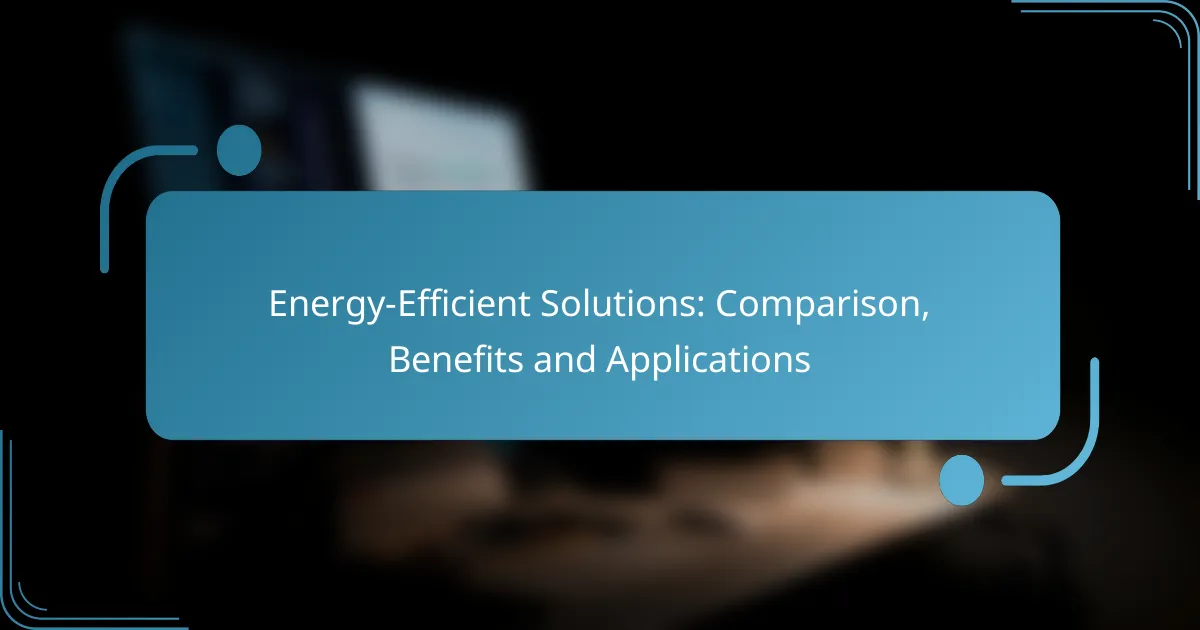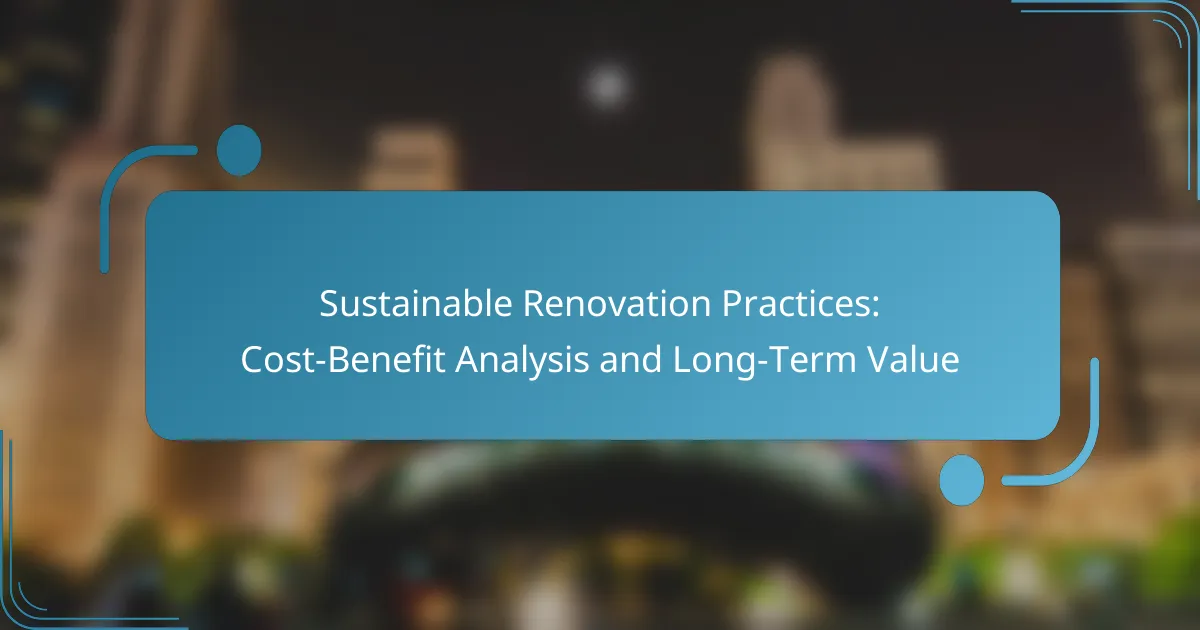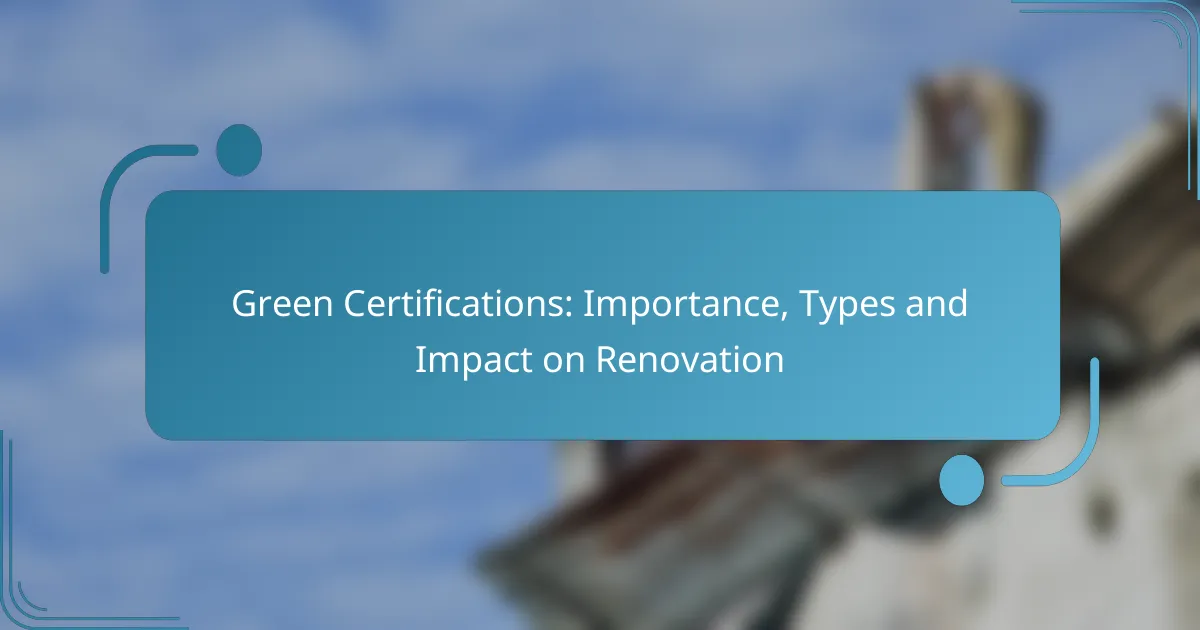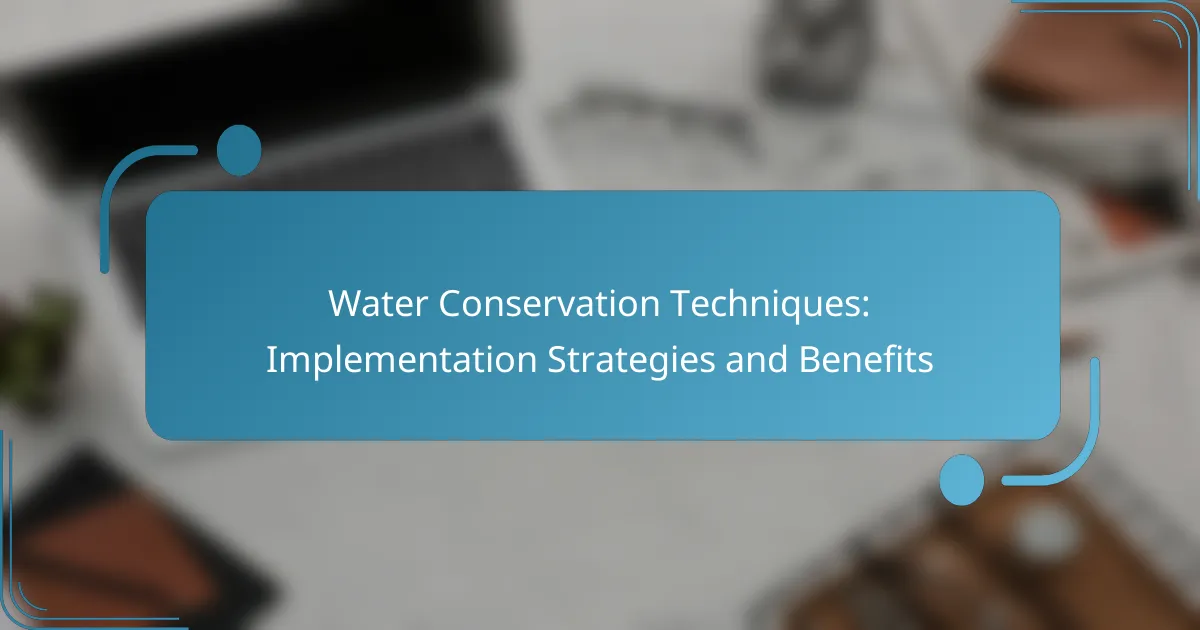Energy-efficient solutions are essential for reducing energy consumption and enhancing comfort in homes. Options such as solar panels, smart thermostats, and LED lighting not only lower utility bills but also contribute to a more sustainable environment. While these solutions may require a higher initial investment, the long-term savings and increased property value make them a worthwhile consideration for homeowners.

What are the best energy-efficient solutions for homes?
The best energy-efficient solutions for homes include solar panels, energy-efficient windows, smart thermostats, LED lighting, and insulation upgrades. These options can significantly reduce energy consumption, lower utility bills, and enhance overall comfort.
Solar panels
Solar panels convert sunlight into electricity, providing a renewable energy source for homes. Installing solar panels can lead to substantial savings on electricity bills, especially in sunny regions. Homeowners should consider local incentives, such as tax credits or rebates, which can offset installation costs.
When evaluating solar panel systems, consider factors like roof orientation, shading, and local energy rates. A typical residential system may range from 3 kW to 10 kW, depending on energy needs and available space.
Energy-efficient windows
Energy-efficient windows are designed to minimize heat transfer, keeping homes warmer in winter and cooler in summer. These windows often feature double or triple glazing, low-emissivity (low-E) coatings, and gas fills between panes to enhance insulation.
When selecting energy-efficient windows, look for those with a high Energy Star rating. Replacing old windows can lead to energy savings of 10-25%, depending on the climate and existing window condition.
Smart thermostats
Smart thermostats optimize heating and cooling schedules based on user habits and preferences, leading to energy savings. They can be controlled remotely via smartphone apps, allowing homeowners to adjust settings even when away from home.
Many smart thermostats learn over time, automatically adjusting to maximize efficiency. Homeowners can expect savings of around 10-15% on heating and cooling costs by using these devices effectively.
LED lighting
LED lighting uses significantly less energy than traditional incandescent bulbs, making it a smart choice for energy efficiency. LEDs can last up to 25 times longer and consume up to 80% less energy, resulting in lower electricity bills.
When replacing bulbs, consider the brightness (measured in lumens) and color temperature (measured in Kelvins) to match the desired ambiance. Switching to LED lighting can lead to substantial savings over time, especially in homes with extensive lighting needs.
Insulation upgrades
Upgrading insulation in attics, walls, and floors can greatly improve a home’s energy efficiency by reducing heat loss in winter and heat gain in summer. Proper insulation helps maintain a consistent indoor temperature, reducing the workload on heating and cooling systems.
Homeowners should consider insulation materials like fiberglass, foam board, or spray foam, each with different R-values indicating their effectiveness. A well-insulated home can save 20-30% on heating and cooling costs, making it a worthwhile investment.
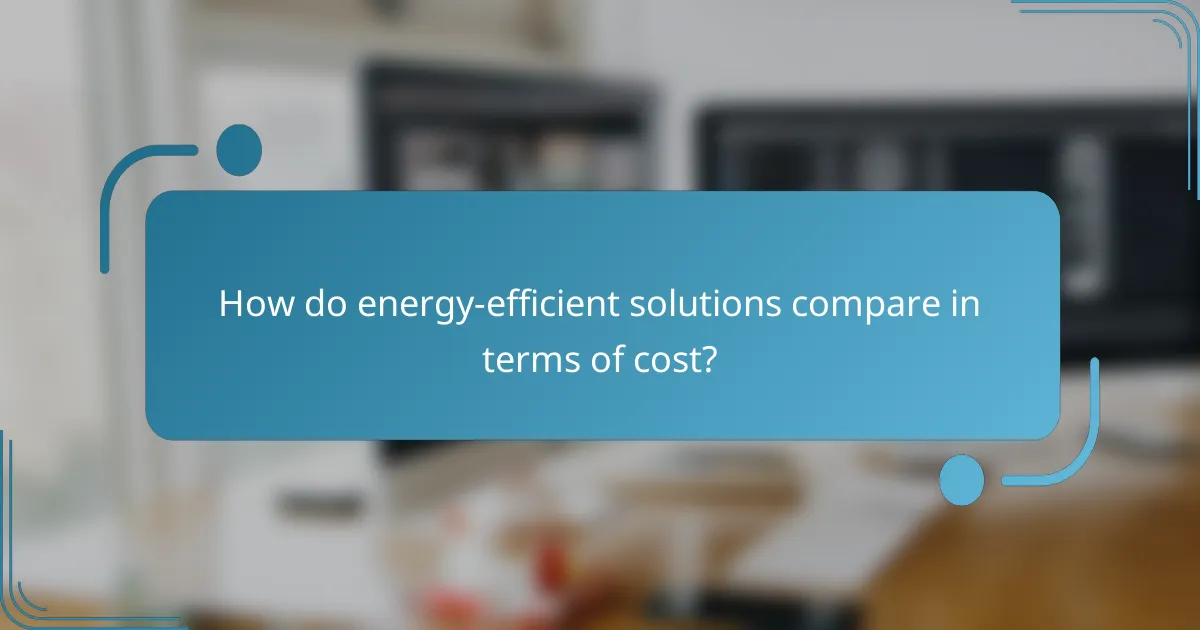
How do energy-efficient solutions compare in terms of cost?
Energy-efficient solutions often have higher upfront costs compared to traditional options, but they can lead to significant savings over time. Evaluating the cost involves analyzing initial investments, long-term savings, and the return on investment (ROI).
Initial investment analysis
The initial investment for energy-efficient solutions can vary widely depending on the technology and application. For instance, LED lighting may cost more upfront than incandescent bulbs, but the price difference is often offset by lower energy consumption. It’s essential to consider installation costs and potential incentives or rebates that can reduce the initial financial burden.
When assessing initial investments, compare similar products and services to identify the most cost-effective options. For example, energy-efficient appliances might have a higher sticker price but can qualify for tax credits or utility rebates, which can significantly lower the net cost.
Long-term savings
Long-term savings from energy-efficient solutions can be substantial, often ranging from 20% to 50% on energy bills. These savings accumulate over time, making it crucial to factor in the lifespan of the product when calculating total costs. For example, a high-efficiency HVAC system may have a higher initial cost but can save hundreds of dollars annually in energy expenses.
Additionally, consider maintenance costs, as energy-efficient systems often require less frequent servicing. This can further enhance overall savings, making energy-efficient choices financially appealing in the long run.
Return on investment (ROI)
The return on investment (ROI) for energy-efficient solutions is generally favorable, with payback periods typically ranging from 3 to 7 years. To calculate ROI, divide the annual savings by the initial investment cost. A higher ROI indicates a more beneficial investment, making it easier to justify the upfront costs.
Keep in mind that ROI can vary based on local energy prices and available incentives. For example, areas with higher electricity rates may see quicker payback periods, while regions with lower rates might take longer to realize similar savings. Always assess your local context to make informed decisions regarding energy-efficient investments.
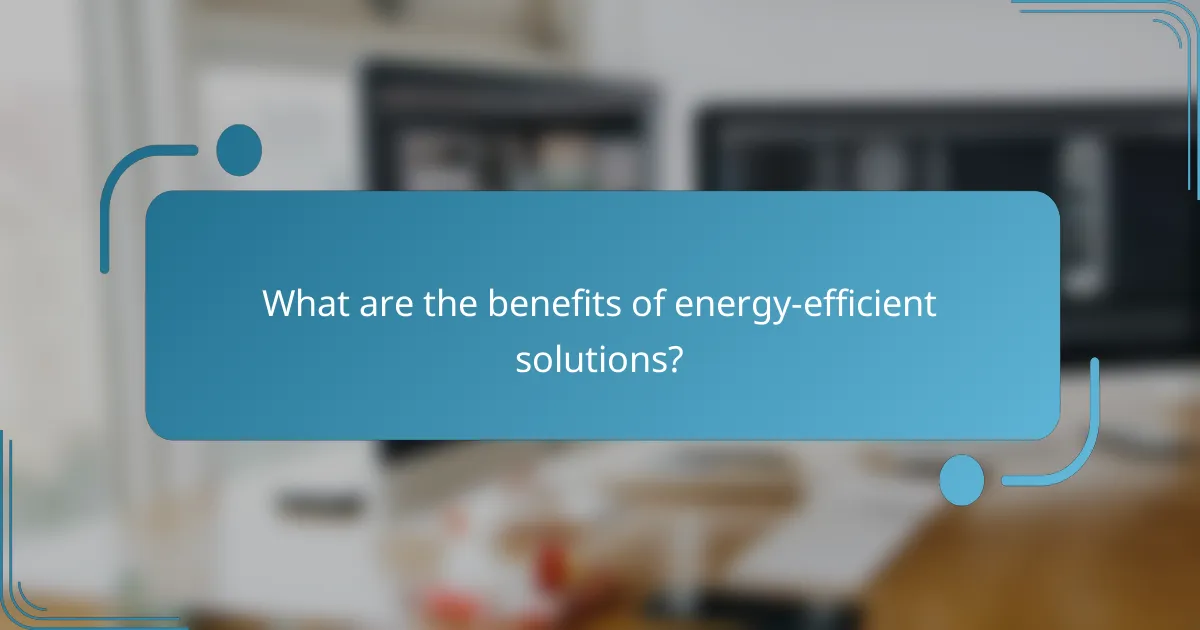
What are the benefits of energy-efficient solutions?
Energy-efficient solutions provide significant advantages, including cost savings, reduced environmental impact, and increased property value. These benefits arise from the effective use of resources and technologies that minimize energy consumption while maintaining performance.
Reduced energy bills
Implementing energy-efficient solutions can lead to noticeable reductions in energy bills. For example, upgrading to LED lighting or high-efficiency appliances can cut electricity usage by up to 50% compared to traditional options. Homeowners and businesses can save hundreds of dollars annually, depending on their energy consumption patterns.
To maximize savings, consider conducting an energy audit to identify areas where efficiency can be improved. Simple changes, like sealing drafts or adding insulation, can further enhance energy performance and lower costs.
Environmental impact
Energy-efficient solutions significantly reduce greenhouse gas emissions and other pollutants. By consuming less energy, these solutions contribute to lower fossil fuel use, which is crucial in combating climate change. For instance, energy-efficient buildings can reduce carbon footprints by 30% or more.
Additionally, many energy-efficient technologies are designed to be sustainable, using less water and generating less waste. Adopting these practices not only benefits the environment but also aligns with global efforts to promote sustainability.
Increased property value
Investing in energy-efficient solutions can enhance property value, making homes and commercial spaces more attractive to buyers. Properties with energy-efficient features often sell for higher prices and can move faster in the market. Features such as Energy Star-rated appliances or solar panels can be strong selling points.
Moreover, energy-efficient buildings typically require less maintenance and have lower operating costs, which can appeal to potential buyers. When considering upgrades, focus on improvements that are recognized for their efficiency, as these can yield the best return on investment.
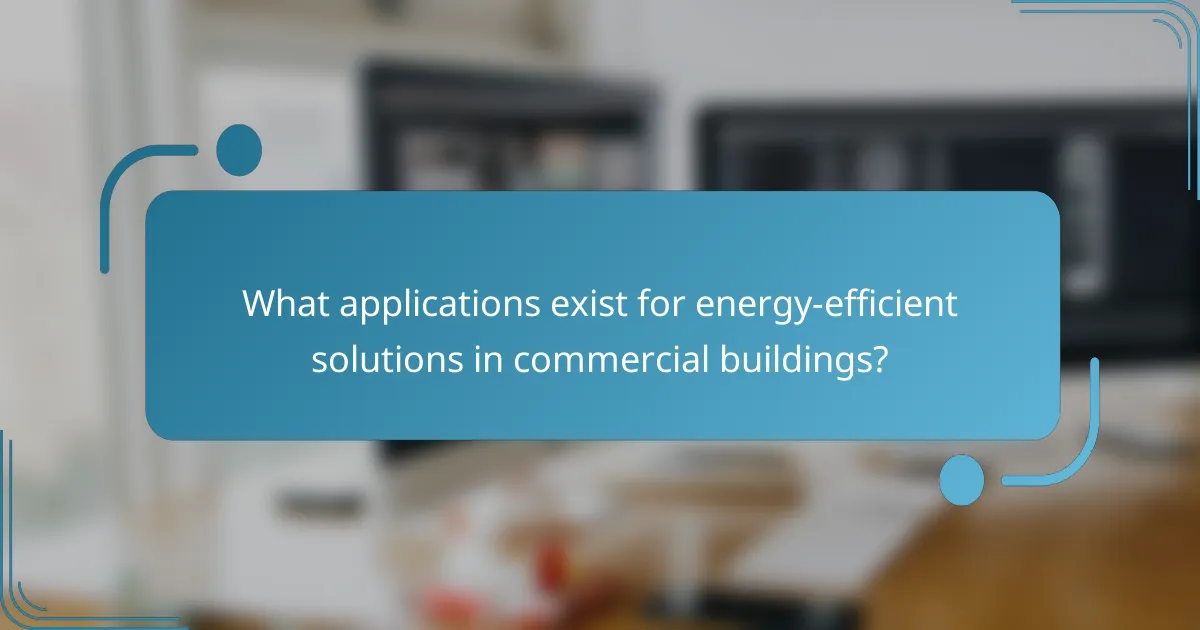
What applications exist for energy-efficient solutions in commercial buildings?
Energy-efficient solutions in commercial buildings primarily focus on reducing energy consumption while maintaining comfort and functionality. Key applications include advanced HVAC systems, energy management systems, and building automation technologies that collectively enhance efficiency and reduce operational costs.
HVAC systems
Energy-efficient HVAC systems are designed to optimize heating, ventilation, and air conditioning while minimizing energy use. These systems often incorporate variable speed drives, high-efficiency chillers, and smart thermostats that adjust settings based on occupancy and weather conditions.
When selecting an HVAC system, consider the size of the building, local climate, and energy costs. Regular maintenance and upgrades can significantly improve efficiency, often leading to energy savings of 20-30% compared to traditional systems.
Energy management systems
Energy management systems (EMS) provide tools for monitoring and controlling energy use across a commercial building. These systems analyze consumption patterns, identify inefficiencies, and offer actionable insights to improve energy performance.
Implementing an EMS can lead to substantial savings, often in the range of 10-25% on energy bills. Businesses should ensure that their EMS is compatible with existing infrastructure and consider staff training to maximize its effectiveness.
Building automation
Building automation systems (BAS) integrate various building functions, such as lighting, HVAC, and security, into a centralized control system. This integration allows for real-time adjustments based on occupancy and environmental conditions, enhancing energy efficiency.
Investing in a BAS can yield energy savings of 15-30%, depending on the building’s size and complexity. It is crucial to choose a system that allows for scalability and flexibility to adapt to future technological advancements and changing needs.
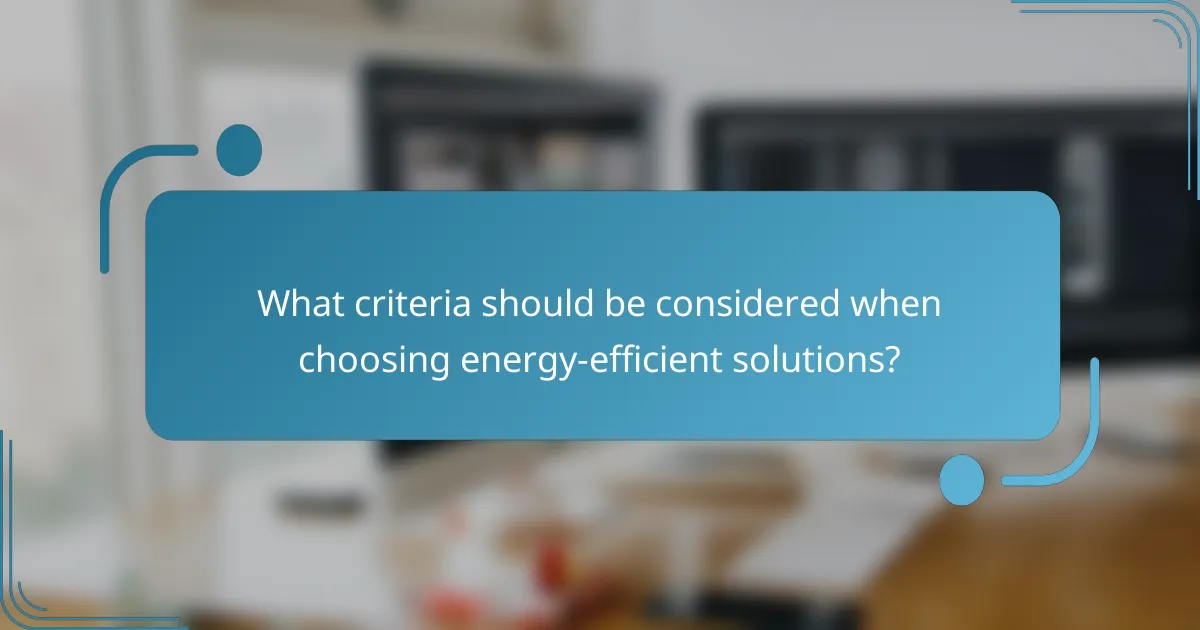
What criteria should be considered when choosing energy-efficient solutions?
When selecting energy-efficient solutions, consider factors such as energy ratings, local climate, and the specific applications of the technology. These criteria help ensure that the chosen solutions effectively reduce energy consumption and align with environmental goals.
Energy ratings
Energy ratings provide a standardized measure of a product’s efficiency, allowing consumers to compare options easily. Look for labels like Energy Star in the U.S. or A+++ ratings in Europe, which indicate higher efficiency levels. Higher-rated appliances typically consume less energy, leading to lower utility bills over time.
When evaluating energy ratings, consider the long-term savings versus the initial investment. While high-efficiency products may cost more upfront, they often result in significant savings on energy costs, making them a worthwhile investment.
Local climate considerations
Local climate plays a crucial role in determining the effectiveness of energy-efficient solutions. For instance, in colder regions, insulation and heating systems must be tailored to withstand harsh winters, while warmer areas may prioritize cooling solutions. Understanding your local climate helps in selecting the most appropriate technologies.
Additionally, consider local regulations and incentives that may influence your choices. Some regions offer tax credits or rebates for energy-efficient upgrades, which can offset initial costs. Always check local guidelines to maximize your benefits while ensuring compliance with any applicable standards.






